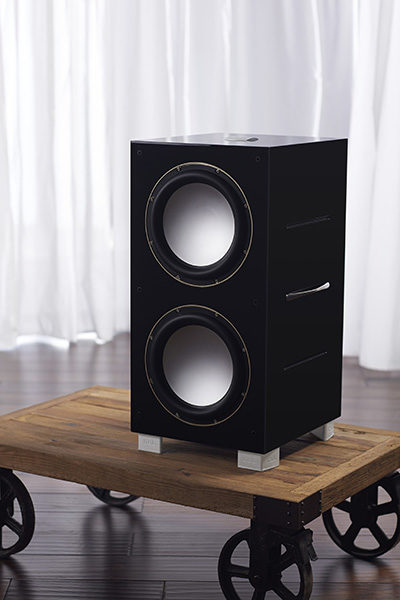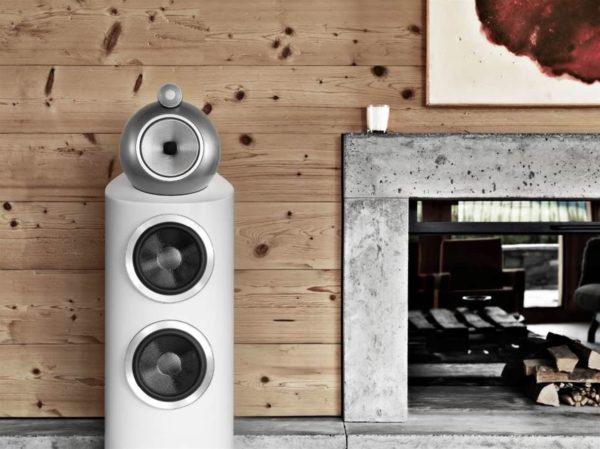Blog
The Balance of Power
Asymmetrical Systems and How They can Deliver True System Balance
Focusing a purchase decision on the latest wonder component or speaker misses the point. No component is transformative without context within a system. It’s all about achieving balance.
We receive a lot of requests for help and guidance here at REL, word having gotten out that we simply want to help people get the most from their systems and with fewer great dealers left, we and a few other truly experienced manufacturers are stepping up to fill the void. Our goal is to act as knowledge references to curate systems that deliver more than the sum of their parts.
Most systems fall into one of two types:
- So-called Balanced Approach:
Have a lot of money and want to feel good about spending it in a traditional approach? Build a “balanced” system wherein costs are distributed roughly evenly among the three primary blocks:- 1/3 on speakers
- 1/3 on major electronics
- 1/3 on sources and connections
This is the traditional way to structure a budget and can yield fair results, especially when the budget is fairly rich. But when budgets are tight and the goal is to get to OMG performance quickly, it’s not the best way to deliver the most for the least—even when your goal is to get to reference or near reference performance for less money.
- Asymmetrical Approach:
A less common approach, but one that can deliver substantially superior results is an asymmetrical system, wherein the budget is divided asymmetrically, with roughly 50-60% on speakers (including subs to obtain truly full range response), 20-30% on major electronics and 20-30% on source+ connections. I’m assuming you’re grown up enough to recognize that the casual estimates of 20-30% require careful balancing on your part or that of your system designer, by which I mean someone whose advice you’ve come to trust—a really good, honest salesperson or an audio advisor who bears the same qualities.
Last April, we teamed up with the Bowers and Wilkins team at a public event in the Rocky Mountain states—working with old friends and making great sound was huge fun for the four of us. We had a chance to catch up and to show what exceptionally well set-up gear, crafted into a thoughtful, if slightly unusual, way can do to deliver the goods. Now, apart from the B&W, Rotel and REL products in our system, we’re going to leave the brand names of the competition’s gear out of this conversation other than to supply general descriptions. We’re here to celebrate the good, not cause discomfort for those who struggled with systems that ran, in one case, 8 times more expensive.
Our ingredients were a pair of trusty B&W 802 D3’s clocking in at $22,000/pr.—a speaker capable of yielding fine results but often delivering less than intended as the result of too few B&W dealers feeling they need to learn how to optimize system dial-in and room acoustics. It’s a legit danger that happens when, for three decades, Bowers set the industry standard for brand management excellence. Yet having the best-run company doesn’t mean they always built the best sounding speakers and apathy set in amongst dealers used to seeing a steady stream of clients walking in and asking for Bowers by name. The 802D3 can make music, but you have to know what you’re doing to achieve that goal.
A Rotel 2-channel stack comprised of the RC-1590 preamp, matching RB-1590 350 watt/channel stereo amp and their model RCD-1572 CD player which, by the norms of the “Balanced Brigade” is downright plebeian. As our crowds, some 280 people over two nights discovered, throwing money at electronics doesn’t always yield superior results; the relatively affordable (total cost approx. $7,000) Rotel gear substantially outperforming a $41,000 stack of expensive chrome and metered stack and while the Rotel gear is good value for money, we had a secret weapon—rather a pair – working for us that night, more on that in a moment.
In addition to the Rotel/B&W components, we had a network of Audioquest’s fine wires and Niagara 5000 power conditioning pulling it all together. A couple months ago, I made the point that when components are capable of delivering two seemingly opposite characteristics –more detail and greater warmth– you’re likely in the presence of audio greatness. The Niagara range delivers one of those amazing feats; everything sounds both larger and more liquid, yet true detail emerges from within that engorged space; not the brightness masquerading as detail that so many high-end audio reviewers fall for, real musical nuance and hall signature detail.
And finally, our system was underpinned by not one, but a pair of REL 212/SE which perform nothing less than miracles placed underneath 802 D3’s. These are the secret ingredient the system needed to achieve not just the bottom 1 ½ octaves of profoundly deep bass, and at levels you probably will never achieve. But the richness and warmth of the real thing, extending up 7-8 octaves allowing the air in the hall to shimmer, as it does live. Cymbals struck softly float in space, the main body of copper alloy producing beautiful, rich fundamentals, a complex and harmonic pool of brass and nickel above–the more strident harmonics colliding above. You see, the RELs are what allow a system—and almost all high-end audio systems suffer from this characteristic—that predominates with high frequency energy and is therefore out of balance, to suddenly and completely revert to perfect balance. When it happens, it’s shocking; like jumping into a pool of clear mountain water expecting to be chilled to the bone, only to discover that it is perfectly warmed to feel more comfortable than you’re ever experienced in water before.
This is the balance that those seeking to build their so-called “balanced” systems miss time and time again. When structural, foundational bass resulting in true state of the art full range sound is not present, we wind up with tiny little (extremely expensive) wind up music boxes, truly adequate only for playing those 5-10 perfectly recorded records or CD’s that exist in every audiophile’s music collection. Restore a system to accurate, full range balance and the number of recordings that sound very-good-to-great increases by ten to thirtyfold. That experience is why we build RELs, because long before I became its designer, I was a customer. And so, our work at REL goes on, always moving the reference points further up the field.
And our customers that night? Must have been over 200 people that stopped by—often furtively, as though they thought police were going to arrest them for expressing a contrary opinion–to express their firm belief that our modest (by the standards of the event) $50,000 system was casually destroying the $400,000 system playing at the end of the hall.












